|
|
|
|
|
6. Inscribed Stone Vessels. (A drawing made by Howard Carter of the partially erased text panel of jar no.405) 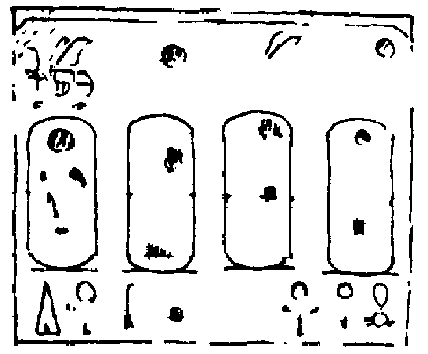 EVIDENCE OF A CO-REGENCY? Two calcite jars found in Tutankhamun's tomb originally had two sets of cartouches next to each other - these were very faint, but Carter believed the traces of these cartouches to conceal the names of Amenhotep III and Akhenaten which would then prove that there was a co-regency between these two pharaohs (names of two kings written this way was done when a co-regency existed). 7. Wine Jars. 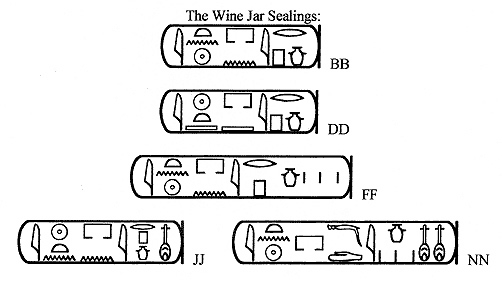 Twenty Six wine vessels found in the tomb carried ink-written hieratic dockets which (in most cases) specified the date of the vintage, beverage type, vineyard and the name of the vintner. From these dockets Howard Carter was able to deduce that 68% of Tutankhamun's wines came from the 'Domain of the Aten', just 5% came from the Amun temples and 27% from Tutankhamun's own vineyards. Also the length of Tutankhamun's reign can be verified - no wine is found which is produced later than Year 9. 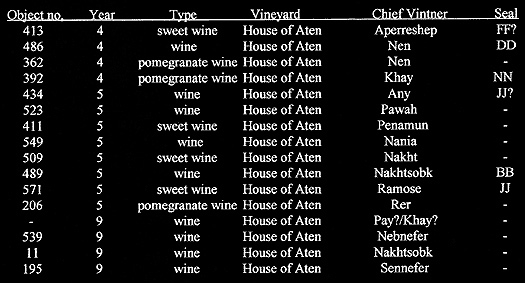 8. The Canopic Shrine. As with several items of Tutankhamun's tomb equipment, many items were probably re-used from the burial of his brother Smenkhkare.In the case of the canopic lids it has been suggested that the lids do not match (very closely) the face of Tutankhamun and therefore must be from his brother's tomb once more. 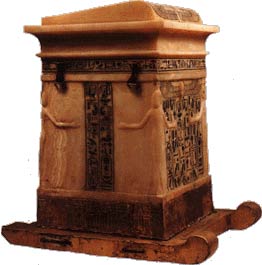 The canopic chest made from calcite and then mounted on a wooden sledge, the sealed cords which originally held the lid in position can still be seen. Removal of the lid then reveals four stunning calcite heads, these are the items which perhaps more closer match Smenkhkare than Tutankhamun.  Under the lids are then found the canopic coffinettes which held the internal organs of Tutankhamun. The signs that these too belonged to Smenkhkare are easier to find - inscriptions on the gold interior of these coffinettes have been altered from that of Ankhkheprure - most probably Nefernefruaten (Smenkhkare) to that of Tutankankhamun. 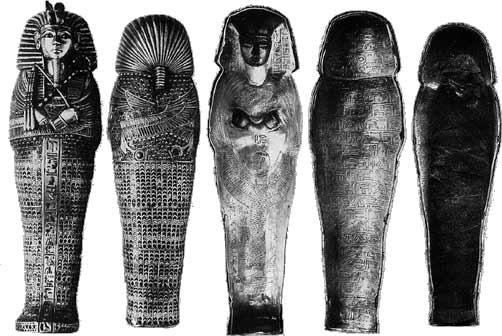 Each coffin held one of either - the liver, stomach (or spleen), lungs and intestines. |
